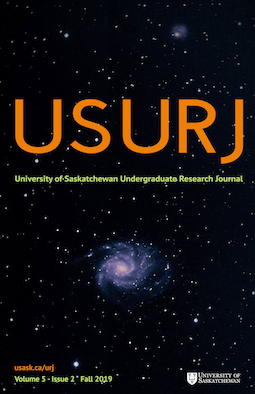“Showcase” vs. “Selective” Undergraduate Research Journals
Providing the Most Benefit to Students, Institutions, and the Academic Community
DOI:
https://doi.org/10.32396/usurj.v5i2.354Keywords:
undergraduate research journals, showcase journals, selective journals, undergraduate research, best practices, student research, baccalaureate, undergraduate experienceAbstract
As Western post-secondary institutions strive to adequately prepare undergraduate students for an ever-changing world, increased interest and investment has been directed towards the undergraduate learning experience. Listed as a high-impact practice (Kuh 10), undergraduate research, in particular, has been increasingly implemented and expanded in a number of institutions over the past several decades, as shown by the growth of the Council on Undergraduate Research (CUR n. pag.). With the rise of undergraduate research culture, the undergraduate research journal (URJ) has emerged. URJs run within a university provide students with the opportunity to enhance their education through exposure to scholarly publishing, develop their research and communication skills, view themselves as content creators, produce higher quality work, and improve their graduate school applications or resumes by building essential skills for the changing job market. Despite the variability present in URJ formats, I have defined two broad categories which URJs fall into. Distinguished as “showcase” and “selective” journals, the two types are differentiated by the implementation of a peer-review process with “showcase” journals publishing papers that have not undergone peer-review and “selective” journals qualifying as scholarly publications. With the intent of providing the maximum benefit to the greatest number of students, a “showcase” journal, without the rigours of peer-review, may appear to be the best fit for achieving this goal as it has the potential to see more student papers published. However, the “selective” showcase journal provides the most cumulative benefits for the student, the institution, and the wider academic community. This is due to experiencing the submission process, which provides students with feedback from reviewers; the prestige of publishing in or housing a high-quality journal; and, growing a discipline’s body of knowledge. While providing any type of publishing platform for undergraduate student work will benefit students, institutions may wish to consider the additional worth of “selective” journals when developing an undergraduate research journal program.
Downloads
Published
Issue
Section
License
Articles: USURJ’s current Publication Agreements apply a Creative Commons Attribution-NonCommercial License (CC-BY-NC) by default. The CC BY-NC license lets others remix, tweak, and build upon work non-commercially. The author(s) can choose a different CC license, as outlined in https://creativecommons.org/about/cclicenses/. Please see the PDF for each article to determine what license is applied to that article. Author(s) can also request to reserve all copyright (All Rights Reserved). If there is no indication for articles published before September 2020, assume the author retains all rights beyond those necessary for publication by USURJ. All articles published after September 2020 will apply one of the aforementioned CC licenses. See the Publication Agreement under the Submission Preparation Checklist or Author Guidelines for more information. Artwork: All copyright for the original artwork remains with the artist unless they wish to apply a Creative Commons (CC) license to the artwork. Please see the PDF for each artwork to determine what license is applied to that artwork.







